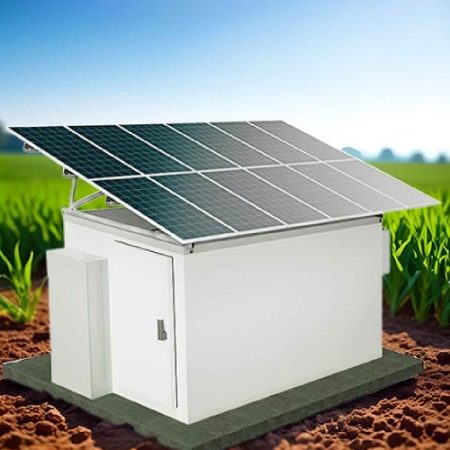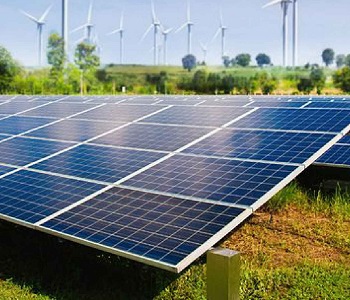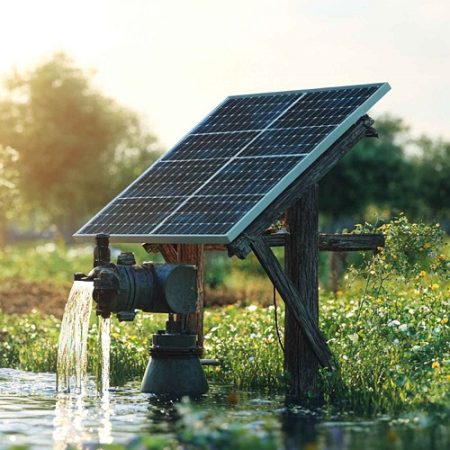Our Products
Younity Solar Solutions
- Cold Storage
- PowerPlant
- BoS for Solar Water Pump
Solar Cold Storage
Solar Micro Cold Room is the most versatile product in the cold chain industry today. Powered by solar, coupled with novel, inventive technologies, the product is changing the cold chain infrastructure landscape in the most effective manner.
Micro Cold Storage is small-scale solar powered cold storage system. With many innovations, it is a pioneering product in the cold chain. lt functions as a standalone system complete with standardized cold storage system functioning. Hybridization is also possible with many other energy sources. Using novel technologies developed endogenously, the product is set apart from any of its counterparts.
This product is targeted mainly at the poorly electrified regions and for places using diesel as a power source. It can be used conveniently in any kind of setting with lucrative value propositions. Coupled with smart controls, it maintains temperature, humidity and air-quality parameters inside the room at recommended conditions.

This robust system ensures freshness and long shelffor commodities that are stored. The unique battery-less back-up system entails virtually zero maintenance and running costs. With our central control system, the power system and the refrigeration system work in tandem to ensure maximum efficiency at all points of time thereby minimizing solar panel requirement, bringing down the production cost and ensuring seamless operation. The modularity ofthe product enables scalability according to user needs.
Technical Specifications
1. The proposed unit should be a solar powered cold storage with thermal storage backup for storage of fresh produce -fruits, vegetables & flowers specifically.
2. The unit has dimensions of around 20ft x 8ft x 8ft with solar panels mounted on the rooftop of the unit. The cold storage maintains a temperature inthe range of 2 C to 10 Cor 10C to 20 C.
3. The system must have battery-less compressor operation. A small battery is provided to operate only the auxiliary loads and the control system.
Solar PowerPlant
Power supply in most of our urban & rural areas is unreliable, forcing people to use small generators based on kerosene, petrol or diesel which are expensive affair to run such generators which causes pollution, noise and leads to increased dependence on oil imports.
Whereas solar powerplant is based on conversion of sunlight into electricity by using solar photovoltaic technology. Which is an economical and trusted source for long-term use.

Grid Connected
(Daytime Application)
A grid-connected photovoltaic power system is connected with utility grid. This consists of solar panels, inverter, power conditioning unit and grid connection equipment. This system ranges from small residential, commercial rooftop to larger i.e. megawatt level of solar.
Off Grid
(Daytime Application)
Completely independent of the grid, the system is connected to a battery via a charge controller which stores the electricity generated and acts as the main power supply. An inverter can be used to provide AC power, enabling the use of normal appliances without mains power.
Major Components Solar Photovoltaic modules, Inverter, Battery & Structure
Advantages Applications
- No power outage
- Reduces electricity bill
- Non-polluting (sound & air) source of energy
- Cuts down the dependency on conventional sources of energy
- Acts as a reliable supply of power
- Helps to slow down / stop global warming
- Provides accessibility of power in remote locations
- Hotels
- Farmhouses / R&D Centres
- Commercial places
- Residential Applications
- Megawatt power generation plants
- Hospitals / Bank / ATMs
- Corporate offices / Fuel pump stations
- Remote village electrification
BoS for Solar Water Pump
Solar market in India is becoming extremely competitive with rapidly falling solar power tariffs. Ultimately it is putting immense pressure on module manufacturers and Solar PV balance of system (BoS) suppliers. BoS has been used as a very simplistic term to define the component requirements of a solar PV plant other than solar modules that roughly constitutes around 50 per cent of the project cost.
BoS refers to the components and equipment that move DC energy produced by solar panels through the conversion system which in turn produces AC electricity. Most often, BoS refers to all components of a PV system other than the modules. In addition to inverters and racking, this includes the cables or wires, switches, enclosures, fuses, ground fault detectors, and more. BoS applies to all types of solar applications like commercial, residential, agricultural, public facilities, and solar parks.

USP of BoS Kits for KUSUM
- Simplified Installation of Solar Pumps as all raw material integrated & made available at one place
- High Quality 100% Virgin Younity make HDPE pipes
- Use of Best-in-Class Branded 3 Core cable to power up Solar pump
- High-quality CPRI / UL approved Earthing kits using high grade Cu Electrodes & Lightning Arrestors
- Precised Cables, Ropes, HDPE pipe supplies as per specifications & customer’s requirements
- In house fitting of nipples to HDPE pipe thereby saving tedious job work at site hence increased productivity.
- Standard packing material and easy identification as per customized models of Solar Pumps
- High-quality Hardware & Electrical Accessories
- High- class Inventory & Warehouse Management systems using latest Software & Tools
- Material Management in a warehouse having 70,000 sq ft area
- Door Delivery of BoS kits up to end user location across Maharashtra hence hassle free on time material delivery ensured thereby savings in the expenses of local material handling & transportation costs





